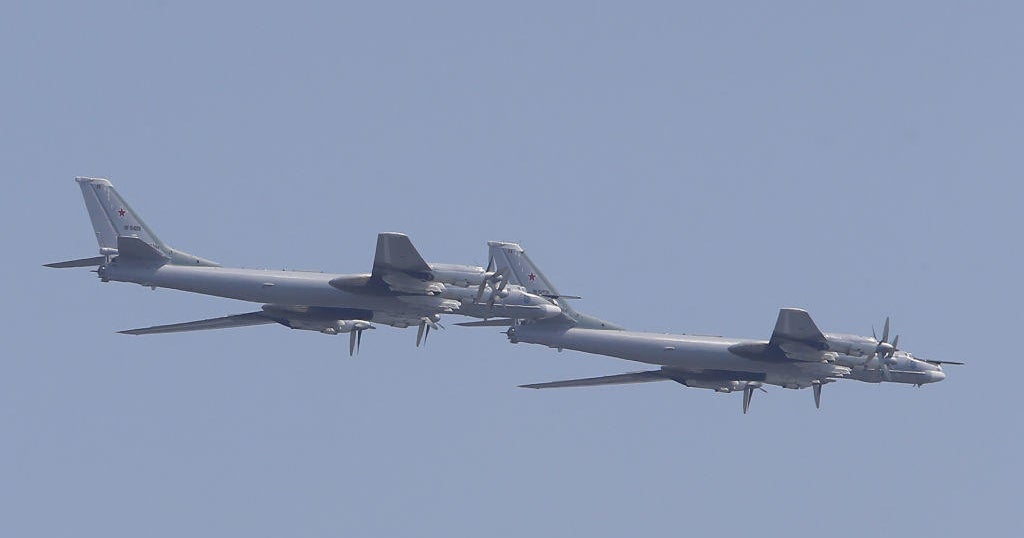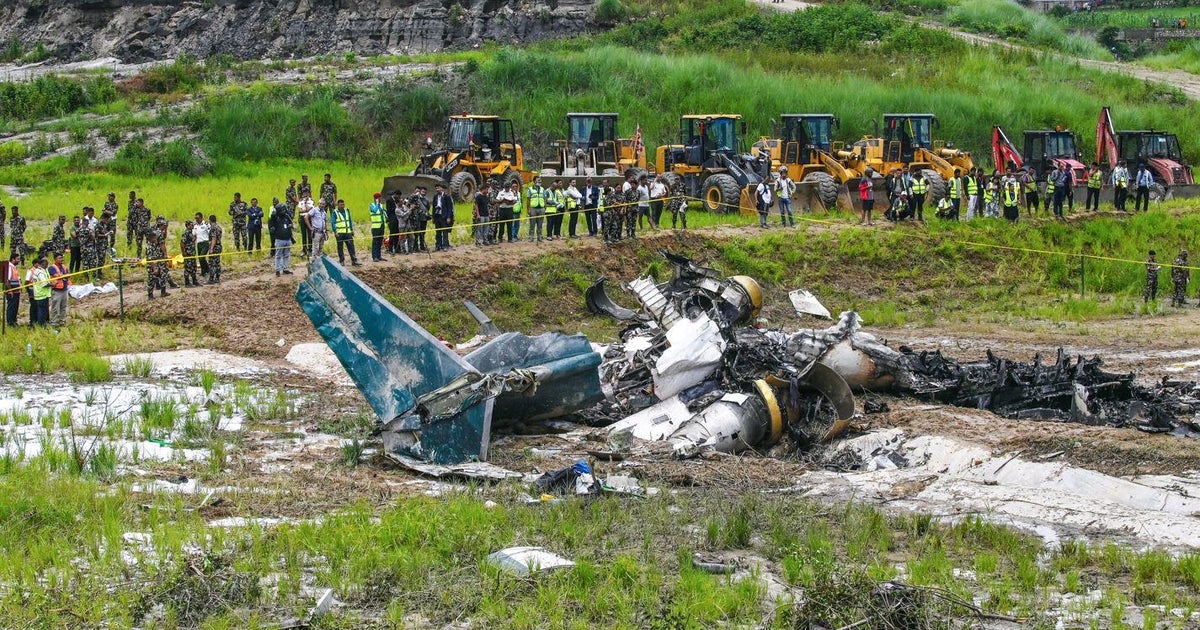Pentagon releases dramatic video said to show Russian jet collision with U.S. drone over Black Sea near Ukraine
The U.S. military on Thursday morning released dramatic video that it said showed a Russian fighter jet intercepting and then colliding with the American MQ-9 "Reaper" drone that crashed into the Black Sea on Tuesday. The U.S. has accused Russia of operating its warplane in an "unsafe and unprofessional" manner during the encounter near Ukraine's Russian-occupied Crimean Peninsula.
On Wednesday, a senior Russian official said Moscow would try to recover the wreckage of the drone. U.S. Army Gen. Mark Milley, the chairman of the Joint Chiefs of Staff, told reporters the unmanned aerial vehicle had likely broken during the crash and whatever debris was left likely sank to a depth of thousands of feet in the Black Sea.
"That's U.S. property," Milley said Wednesday at a Pentagon news conference. "There's probably not a lot to recover, frankly."
An official told CBS News that the Russians had reached the site of the crash and would probably manage to collect some pieces of the debris, like metal chunks, but Milley said the U.S. had taken mitigating measures to prevent the loss of any sensitive intelligence.
"We are quite confident that whatever was of value is no longer of value," he told reporters.
The video released Thursday by the Pentagon (above), captured by a camera on the MQ-9, first shows a fighter jet pass by at close range before making another pass during which it allegedly hit the drone's propeller. The camera view is lost briefly after the apparent collision but it comes back to show what the Air Force said was damage to the propeller from the strike.
The Russian jet "dumped fuel upon and struck the propeller of the MQ-9, causing U.S. forces to have to bring the MQ-9 down in international waters," the Air Force said in a statement accompanying the video.
The video released by the U.S. military's European Command was "edited for length, however, the events are depicted in sequential order," the statement said.
The U.S. has asked its European Command to examine the escalation risks versus the intelligence benefits of drone flights into the restricted area the Russians have declared over the Black Sea, sources tell CBS News' David Martin. The U.S. has already flown one flight over the area of the shoot down to monitor Russian recovery efforts and it intends to fly more, but it is reassessing its drone operations. CNN was the first to report about the examination.
Speaking to reporters this week, Air Force Brig. Gen. Pat Ryder wouldn't say whether the drone was armed, and he referred to the unmanned aircraft as a MQ-9, but not by its other name, the Reaper. The U.S. uses Reapers for surveillance and strikes and has operated the aircraft from Europe to the Middle East and Africa.
U.S. Defense Secretary Lloyd Austin said Wednesday, speaking alongside Milley, that he had spoken with his Russian counterpart Sergei Shoigu after the incident over the Black Sea, but the American defense chief didn't provide details of the conversation.
"The United States will continue to fly and to operate wherever international law allows, and it is incumbent upon Russia to operate its military aircraft in a safe and professional manner," Austin told reporters.
Russia's Defense Ministry said Shoigu had told Austin that the collision was the result of "increased [U.S.] intelligence activities against the interests of the Russian Federation" and "non-compliance with the restricted flight zone" declared by Moscow amid its ongoing war in Ukraine. Ukraine's southern coast is on the Black Sea, and Crimea, occupied by Russia since 2014 and claimed as its sovereign territory, sticks out into the body of water.
The Russian ministry said it would react "proportionately" to any more U.S. "provocations" in the region, warning that "flights of American strategic unmanned aerial vehicles off the coast of Crimea are provocative in nature, which creates pre-conditions for an escalation of the situation in the Black Sea zone."
"Russia is not interested in such a development of events, but it will continue to respond proportionately to all provocations," the defense ministry said.
CBS News' Eleanor Watson contributed to this report.






